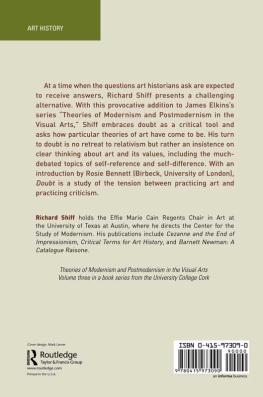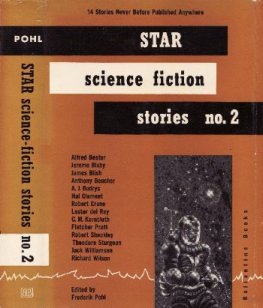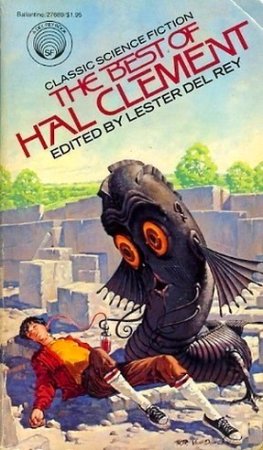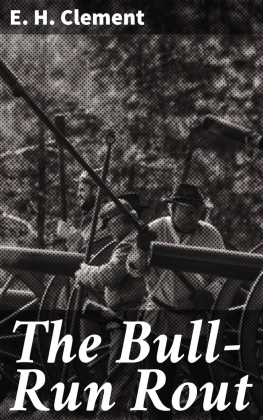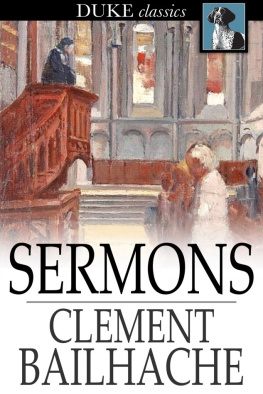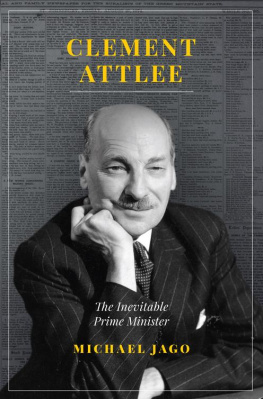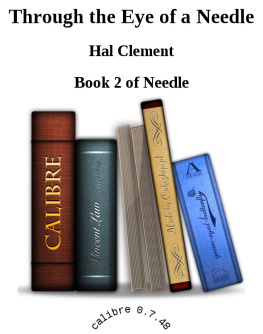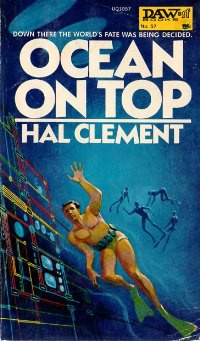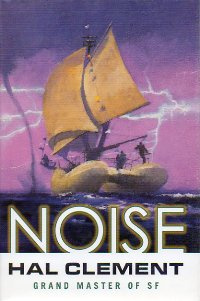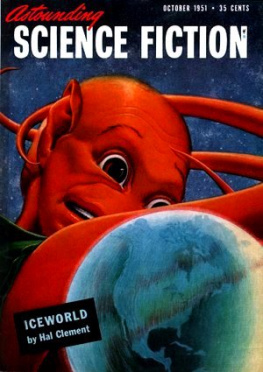Greenberg Clement - Doubt
Here you can read online Greenberg Clement - Doubt full text of the book (entire story) in english for free. Download pdf and epub, get meaning, cover and reviews about this ebook. City: New York;USA, year: 2008, publisher: Routledge, genre: Science. Description of the work, (preface) as well as reviews are available. Best literature library LitArk.com created for fans of good reading and offers a wide selection of genres:
Romance novel
Science fiction
Adventure
Detective
Science
History
Home and family
Prose
Art
Politics
Computer
Non-fiction
Religion
Business
Children
Humor
Choose a favorite category and find really read worthwhile books. Enjoy immersion in the world of imagination, feel the emotions of the characters or learn something new for yourself, make an fascinating discovery.
- Book:Doubt
- Author:
- Publisher:Routledge
- Genre:
- Year:2008
- City:New York;USA
- Rating:5 / 5
- Favourites:Add to favourites
- Your mark:
- 100
- 1
- 2
- 3
- 4
- 5
Doubt: summary, description and annotation
We offer to read an annotation, description, summary or preface (depends on what the author of the book "Doubt" wrote himself). If you haven't found the necessary information about the book — write in the comments, we will try to find it.
Doubt — read online for free the complete book (whole text) full work
Below is the text of the book, divided by pages. System saving the place of the last page read, allows you to conveniently read the book "Doubt" online for free, without having to search again every time where you left off. Put a bookmark, and you can go to the page where you finished reading at any time.
Font size:
Interval:
Bookmark:
Doubt
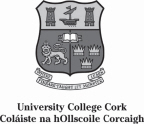
Theories of Modernism and Postmodernism in the Visual Arts
A BOOK SERIES FROM ROUTLEDGE AND UNIVERSITY COLLEGE CORK
James Elkins
General Editor
VOLUME 1
Master Narratives and Their Discontents
James Elkins
VOLUME 2
Ways around Modernism
Stephen Bann
Doubt
Richard Shiff

Routledge
Taylor & Francis Group
270 Madison Avenue
New York, NY 10016
Routledge
Taylor & Francis Group
2 Park Square
Milton Park, Abingdon
Oxon OX14 4RN
2008 by Taylor & Francis Group, LLC
Routledge is an imprint of Taylor & Francis Group, an Informa business
Printed in the United States of America on acid-free paper
10 9 8 7 6 5 4 3 2 1
International Standard Book Number-13: 978-0-415-97309-0 (Softcover) 978-0-415-97308-3 (Hardcover)
Except as permitted under U.S. Copyright Law, no part of this book may be reprinted, reproduced, transmitted, or utilized in any form by any electronic, mechanical, or other means, now known or hereafter invented, includ- ing photocopying, microfilming, and recording, or in any information storage or retrieval system, without written permission from the publishers.
Trademark Notice: Product or corporate names may be trademarks or registered trademarks, and are used only for identification and explanation without intent to infringe.
Library of Congress Cataloging-in-Publication Data
Shiff, Richard.
Doubt / Richard Shiff ; with an introduction by Rosie Bennett.
p. cm. -- (Theories of modernism and postmodernism in the visual arts ; 3) Includes bibliographical references and index.
ISBN 978-0-415-97308-3 (hardback) -- ISBN 978-0-415-97309-0 (pbk.) 1. Modernism (Art)--United States. 2. Art, American--20th century. 3. Art criticism. 4. Greenberg, Clement, 1909-1994. I. Title.
N6512.5.M63S54 2008
709.04--dc22 2007017640
Visit the Taylor & Francis Web site at
http://www.taylorandfrancis.com
and the Routledge Web site at
http://www.routledge.com
CONTENTS
ROSIE BENNETT
SERIES PREFACE
There is a gap in accounts of modern art. Some of the best historical work has been done by scholars who have not wanted to contribute to the large-scale questions of what modernism might be or how nineteenth-century art might fit in the lineages that led to postmodernism. That is one side of the gap. On the other is a common pedagogic literature intended to introduce modernism to beginning students; it is generally not written by the scholars whose work is central to the developing discipline, and it is not often cited. Between these two extremes there should be a kind of writing that is at once attentive to the grain of history and responsive to the different and often contentious accounts of modernism as a whole. Such writing is rare for a variety of reasonssome of which are embedded in the ways modernism itself has been understood. So far, there have been only a few exceptions, notably T. J. Clarks Farewell to an Idea and the multiply authored Art since 1900. Aside from those two enormous, contentious, and problematic texts, there is almost nothing between the sides.
In this series major scholars in the field consider the shape of the twentieth century: its essential and marginal moments, its optimal narratives, the strengths and weaknesses of its self-descriptions. I hope that the series as a whole will be helpful for those who find, as I do, that it can be revealing to put a little pressure on the assumptions that are made in recent scholarship regarding what is or is not crucial to an understanding of twentieth-century art. There is a growing literature, for example, on surrealism and its afterlife. In what ways does that scholarship imply that a version of surrealism is central to a description of some contemporary art? Or to take another example, How does cubism sit with accounts that rely on modernisms political aspirations? Where is Clement Greenberg, his ghosts or avatars, in current historiography?
Large questions like these are the subject of this series. If we do not try to assemble the best theories, to winnow the worst, and to prepare a clear collation, then what does it mean to continue to write about art in an age of increasing pluralism? I hope it means more than playing in an era that is happily after the history of art, in Arthur Dantos phrase.
I have mixed hopes for this series. On the one hand, I doubt the ideas these authors set out will comprise a consensus, or even a satisfactory, survey. On the other hand, I believe that there is not an indefinitely large number of cogent, informed, and committed versions of how the century went: On the contrary, I think only a handful of separate and simultaneous conversations sustain our sense of what modernism was, or is, and it is possible to gather and compare them.
A parallel might be made to physics here: Physics turns on what are called grand unified theories (GUTs) and theories of everything (TOEs), in the sense that physicists work with those possibilities always in mind so that the smallest theoretical demonstration or technical innovation gains significance by its potential connection to the literally larger questions. In the event, many things may happen before the small-scale result can ever effect its ideal theoretical impetus, but that does not vitiate the fact that in physics it is absolutely crucial that large-scale theories exist to drive local inquiries. Art history is different in many ways, not least in that art historians need not think of large-scale problems at all. Yet in art history reticence regarding larger problems is sometimes taken as a virtue, and that, I think, is questionable. It is as if the most prominent physiciststhe Steven Weinbergs or the Stephen Hawkingswere silent about the basic laws of physics, or as if the most active and creative physicists were committed to looking only at specialized phenomena, leaving the form of the physical world, and the direction of physics, to others as a matter of speculation. What I mean to suggest is that there is a point beyond which attention to the fine structure of historical events is no longer the necessary virtue of good historical work but rather becomes a strategy of avoidance that can threaten the coherence of the enterprise as a whole. In that sense, larger questions are not unhelpfully large or irrelevantly large, as they tend to be taken to be, but are crucially large.
The risks of avoiding going on the record about larger questions of twentieth-century art are nicely illustrated by a recent exchange involving English critic Julian Bell, American art historian Michael Fried, and nineteenth-century German realist painter Adolf Menzel. In the London Times Literary Supplement, Bell reviewed Frieds book on Menzel, praising Frieds readings of individual works and his rigor but remarking that it is unfortunate Fried chose not to connect this book, his first on a German artist, with his decades of work on the French tradition. How is Menzel linked, Bell wondered, to the sequences of French painters that Fried had studied in the past? How is modernism affected, if at all, by this alternate genealogy? They are good questions, hastily posed but essentially accurate. Menzel is notcannot bean isolated figure somehow beyond the streams of modernism, if only because the critical terms Fried brought to bear on modernism figure throughout his book on Menzel, driving Frieds inquiries and informing his judgments. It is the aim of this series to provide a space where challenges like Bells can be taken seriously without becoming either ephemeral polemics or floating generalizations of the sort most useful to first-year students.
Next pageFont size:
Interval:
Bookmark:
Similar books «Doubt»
Look at similar books to Doubt. We have selected literature similar in name and meaning in the hope of providing readers with more options to find new, interesting, not yet read works.
Discussion, reviews of the book Doubt and just readers' own opinions. Leave your comments, write what you think about the work, its meaning or the main characters. Specify what exactly you liked and what you didn't like, and why you think so.

